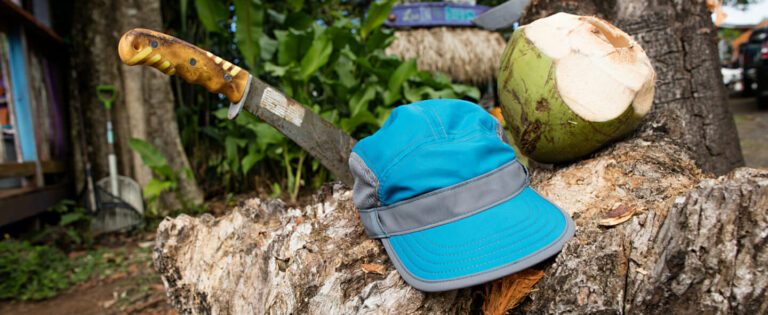
Regardless of whether you’re a professional alpinist or like to go for a stroll, you depend on hardshell jackets to protect yourself from rain and stormy weather. For this reason, weatherproof jackets have become an integral part of any and all outdoor gear. There are so many manufacturers that offer a huge range of waterproof jackets, all of which promise to be your go-to jacket for all sorts of activities.
There are so many that it’s almost impossible to navigate through this jungle of hardshells. But, that’s why we’re here! We’d like to give you a few pointers for buying your next jacket.
What is a hardshell jacket?
This question is pretty easy to answer: hardshell jackets are waterproof, windproof and breathable. This means that whilst water cannot permeate the jacket, water vapour can pass through, meaning that sweat can escape to the outside. This effect is primarily achieved by applying a membrane or a coating to the inside of the jacket.
Membrane or coating?
This is one of the main things you should consider when looking for the perfect jacket. High-quality membranes are more durable than coatings and will therefore keep the jacket waterproof for a longer period of time. Coatings, on the other hand, will wear away more quickly, so the jacket will eventually lose its waterproof properties. How long the respective garment is waterproof also depends strongly on the quality of the material and the type of use. For long trekking tours with a heavy backpack, a membrane is recommended. Well-known manufacturers here are GORE-TEX, Dermizax, HyVent and Sympatex. For occasional weather protection while jogging, cycling or bouldering, jackets with a coating are usually quite sufficient.
2 layers or 3 layers? What about 2.5 layers?
In 3-layered jackets, the outer fabric, membrane and lining are laminated together. The membrane is thereby completely protected from friction. The jacket is lightweight, yet still very durable. In 2-layered jackets, the membrane and outer fabric are laminated together, whereas the lining is a separate fabric. In this case, however, the lining can rub against the membrane, which is why 2-layered jackets are not quite as durable as 3-layered jackets.
2.5 layered jackets have the advantage that the membrane is protected by an additional layer. However, this is only a partially protective layer, such as the carbon layer in the Gore-Tex Paclite. Other manufacturers use a honeycomb structure to protect the membrane. These are lighter and more breathable, but they sacrifice durability. 2.5-layered jackets are indeed tougher than 2-layered jackets, but only partially compatible with backpacks.
All in all, we can say that their compatibility with backpacks is less dependent upon the number of layers than on the materials used. So, be sure to read the product descriptions for detailed information on what is the jacket’s intended area of use.
Pack size
A jacket that you always carry with you in your backpack should be durable, first and foremost. The pack size shouldn’t really be an issue here. However, if you only plan on wearing the jacket when it rains and otherwise just keep it in your backpack, then its pack size may be a deciding factor. Both a small pack size and low weight would be very important. For example, the 289g Mountain Hardwear Plasmic Jacket is very stowable and would undoubtedly fit in any backpack.
It’s usually not difficult to find a durable jacket for bad weather. But, whether or not it’s the right jacket for you depends much more on its features.
Special features
Underarm zips
Underarm zips, featured in the Patagonia Torrentshell Jacket, for example, allow air to pass through both ways and are essential for high-intensity activities. Even if a fabric is breathable, a jacket can only allow a certain amount of water vapour to pass through, and its doing so depends on the temperature and humidity. Underarm zips make it possible for you to directly ventilate the part of your body where you sweat the most. Plus, these openings allow far more water vapour to escape to the outside than any material would. What’s more, they are positioned in such a way as to allow you to use them even when it’s raining (as rain tends to fall from the sky, not from the ground).
Position of the pockets
If you’ve ever worn a backpack with a hip belt, you’ve probably noticed that the little devil covers up your jacket pockets, rendering them essentially useless. Many hardshell jackets, such as the Spire jacket from Marmot, are thus equipped with pockets that are positioned higher up on the jacket than normal hand pockets. As a result, the hip belt doesn’t cover them up. This feature is not just really convenient, but absolutely necessary! Because not only do waist and hip belts tend to cover up jacket pockets, but climbing harnesses do too. So, if you’re a climber and in the market for a new jacket, take note!
Reinforced shoulders and elbows
The membrane is the heart of every hardshell jacket. If you protect it, you’ll drastically extend the lifespan of your jacket. Having reinforced sections really helps with this. They are particularly useful for areas which are exposed to the most wear and tear and promise additional protection for the jacket. As a result, heavy backpacks don’t stand a chance against these jackets.
Helmet-compatible and adjustable hoods
Whether you’re ice climbing, caving, mountaineering or biking – wearing a helmet is mandatory! However, your head needs protection not only from falling rocks etc., but also from rain, snow and water in general. Therefore, a hood should fit either over or under your helmet. If the hood is adjustable, it will adapt to both your head’s shape and movements nicely, giving you a clear view even in the rain.
Drawstrings
Drawstrings on jackets allow you to find that perfect, individualised fit. Plus, they prevent unwanted cold air from seeping in at the waist, neck and wrists. For better protection around your head, you can simply adjust the hood. Ideally, the drawstrings will be equipped longer straps so that they can also be operated with gloves.
Freedom of movement
There are jackets that have so-called underarm gussets. These panels allow for excellent upward arm mobility, which is not only a great feature for climbing and bouldering, but also for cycling. There are also jackets with a stretchy material blend.
Waterproof zips
There are two ways to design a waterproof zip: you can use technical zips, which are manufactured to be waterproof, or a traditional storm flap, which serves to prevent water from getting in. In any case, if the zips are not protected, they won’t be able to keep the water completely out of the jacket. It’s a more of question of taste as to which option you prefer. The coated zips are more lightweight than an additional storm flap. However, there’s always the risk of the waterproofing deteriorating over time as a result of frequent use, resulting in leaks.
2-way zips
A zip that you can open in both directions, has the advantage that it gives you more flexibility when it comes to ventilating the jacket. If you want to protect your neck from the wind but still have part of the jacket open, simply use the bottom end! This is something that comes in handy whilst wearing a climbing harness as well, since you have the option of opening the jacket at the bottom and pulling it over the harness. By doing this, the harness will still work but will remain covered by the jacket.
More zips!
Gloves can make finicky zips a real pain in the neck, so much so that you’d usually have to take off your gloves in order to reach the contents of your pockets or open the underarm zips. However, with long pull tabs, you can open the zips effortlessly, even with the thickest mittens on. Brilliant in cold weather! If the jacket doesn’t already have these practical additions, they can also be retrofitted very easily.
Breathability
A waterproof jacket keeps water droplets out and therefore works as an effective barrier in the rain, whilst still allowing water vapour (sweat) to pass through. However, this is only the basis of a jacket’s water vapour permeability. Other factors usually play a much more important role and have a significant impact on the level of breathability, such as your body temperature and the outside temperature. If the outside temperature is very high, the jacket’s breathability will be greatly reduced.
Finding the right layers to wear underneath a hardshell jacket is pretty important, too. A base layer and a mid-layer with moisture-wicking properties are capable of transporting sweat away from the body to the next layer and then, via the hardshell jacket to the outside, whereas a standard cotton T-shirt would inevitably remain damp. When engaged in strenuous activities, we can produce several litres of sweat, which even a high-end membrane would struggle transporting to the outside as quickly as we would like. The lack of a waterproof treatment can lead to the fabric becoming saturated with water and, consequently, inhibit the water vapour permeability.
Why would a hardshell jacket suddenly allow water to pass through?
After you’ve ruled out the possibility of the water being your own sweat, there’s only a few possibilities left. Often, a damaged membrane is the culprit. Even if there’s no obvious rip in the material, the membrane may have been damaged by some external factors. Roughly woven outer fabrics leave enough room for even the finest of dirt particles to penetrate the material. These act like sandpaper and can wear down the membrane without you even noticing it, making it permeable to water. Holes and smaller tears resulting from the jacket getting caught on something or falls can be taped up using repair kits or professionally mended by manufacturers and service partners.
However, the reason for this is usually the incorrect or even complete lack of maintenance and care. When we wear our jackets, the finest skin and dirt particles are deposited on the inside. If the dirt has settled in the pores of the membrane, it draws moisture from the outside into the jacket’s interior. This can be fixed quickly by washing the garment and applying a waterproof treatment. However, be sure not use fabric softeners, as they clog the pores. Since even regular detergents may contain a small amount of fabric softener without advertising it, we recommend you use a detergent specifically made for these kinds of garments. These do not contain fabric softeners, will clean at the required low temperatures and are environmentally friendly.







